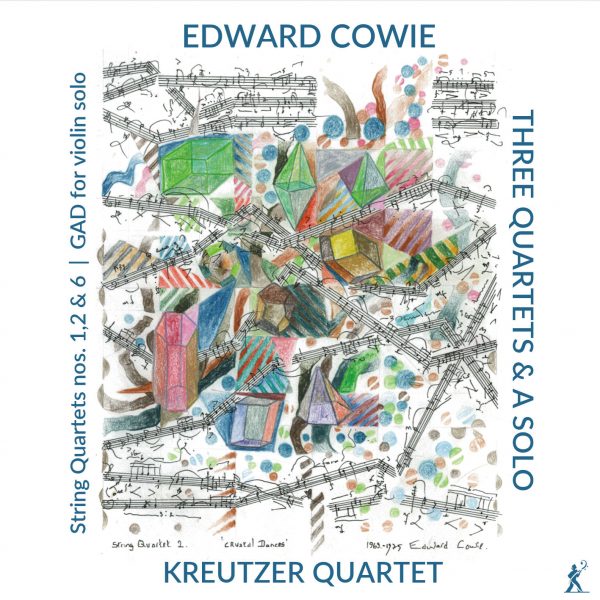Musical Opinion
Edward Cowie’s String Quartets 3, 4 and 5 featured on a 2016 NMC recording by the Kreutzer Quartet. The players have now set down in the studio for the Métier label the composer’s first, second and sixth quartets, together with a substantial work for solo violin. Frequently inspired by the natural world and challenging for players and listeners alike, Cowie’s music has integrity and an individual approach to form and content which the Kreutzers understand instinctively.
Cast in one movement, String Quartet no.1 (1969) is subtitled Dungeness Nocturnes, a phrase that conjures up images of whirring nuclear power turbines amid a stony, desolate landscape. In a shadowy, sometimes phantasmagorical work that contains myriad dynamic fluctuations and often operates on the borders of silence, the Kreutzer Quartet’s uncanny ability to achieve genuine pianissimos and, when required, even quieter, almost imagined utterances is especially impressive. Capturing precisely the uncanny juxtapositions of quietly teeming activity and rock-like stillness in Cowie’s writing, they are also alert to the music’s disarming poise.
Another single-movement piece, String Quartet no.2 Crystal Dances (1977) was inspired by a study of the formation of crystals, as the exquisite, glinting dance-forms this process generates suggested to the composer a series of tightly-knit, constantly evolving variations. The players relish the graceful energy of a score which offers glimpses rather than vistas and favours delicate intimations instead of hefty statements. Between the spirited opening section and the spectral conclusion, various contrasting moods are conjured up effortlessly, from elegant reticence to dark and fierce eruptions.
The quartet’s first violinist Peter Sheppard Skærved takes centre stage for GAD (2017), a substantial work for solo violin, subtitled Very Highly Strung Music. It was written while the composer was in the grip of an anxiety attack and extreme episodes in the score include slurring glissandos, wobbly vibrato and stratospherically high-pitched yelps played from the far-side of the bridge. Yet the piece also contains moments of steely bravura and profound eloquence, as well as a wistful, haunting passage involving pizzicato and bowed notes played simultaneously. Before the halting final phrases, Peter Sheppard Skærved delivers a brief series of chords with heart-wrenching vulnerability and uncertainty, just one of a number of deeply felt and unerringly placed gestures. This important addition to the repertoire receives an interpretation of great sensitivity and expressive subtlety.
Rounding off the disc, the Kreutzer Quartet performs Cowie’s String Quartet no.6 The Four Winds (2012). The four movements are directional, representing the character of the West, North, East and South winds, respectively. Gossamer-textured thematic fragments whirl and float, borne along by the direction of the prevailing breeze. In each of the four movements a member of the quartet plays a short but incisive cadenza-like passage that encapsulates the character of that movement. Edward Cowie’s String Quartet no.6 contains moments of lyrical beauty, notably a songlike theme for cello in the finale. An intricately constructed work of considerable refinement, it is rendered here with immense concentration and inventiveness.
The four pieces on this release unfold with a powerful sense of inevitability and they all benefit from the Kreutzer Quartet’s outstanding technical skill, placed entirely at the service of the music. The excellent recording ensures that even the softest, airiest phrases are caught on the wing.
@divineartrecordingsgroup
A First Inversion Company
Registered Office:
176-178 Pontefract Road, Cudworth, Barnsley S72 8BE
+44 1226 596703
Fort Worth, TX 76110
+1.682.233.4978












